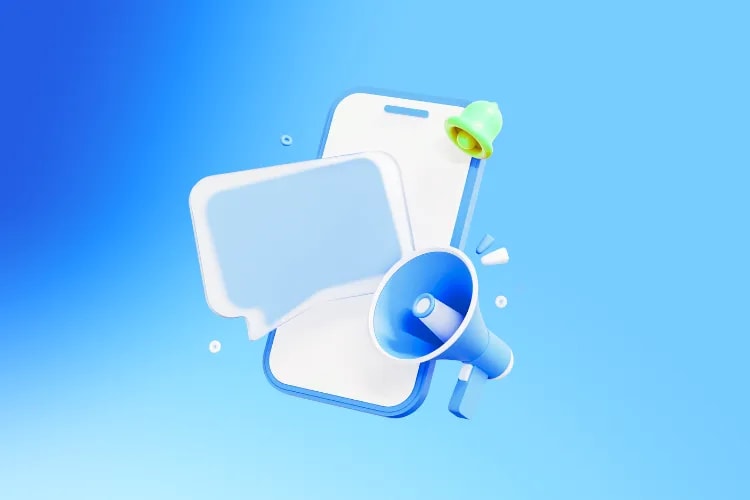
Sponsorship isn’t a nice-to-have, it’s a core pillar of event revenue and growth. Global sponsorship spend has surpassed $100B and continues to climb, as brands increasingly expect measurable outcomes from the events they back. In other words, sponsorship has evolved into a performance channel that can drive mid- to lower-funnel results like qualified leads, purchase intent, and sales acceleration. [Statista’s 2025 sports sponsorship overview] underscores the size and momentum of the category.
But there’s a persistent dilemma for organizers: how many sponsors do you really need? Too few, and you risk underfunding critical experiences. Too many, and you clutter the program, dilute visibility, and degrade attendee satisfaction. The right number isn’t a fixed figure; it’s the outcome of a clear strategy grounded in your budget gap, audience value, and sponsor fit.
This guide walks you through a practical framework to determine the optimal sponsor count for your event, how to structure packages that deliver, and how to measure ROI so you can renew and grow year after year.
The right sponsorship strategy starts with clarity. Your event’s purpose and audience should set the sponsorship target and mix—not the other way around. Before you think about the number of logos, define the outcomes you need for the business and for attendees.
Align sponsorship with business goals: What gap must sponsorship close? Which strategic initiatives (new content formats, VIP experiences, tech upgrades) will it fund?
Prioritize attendee value: Will these partnerships make the event better—richer content, more utility, smoother operations, or memorable experiences?
Design for fit: Do your audience’s profile and intent signals match the partners you’re courting? The closer the fit, the fewer sponsors you need to hit your goals.
If you haven’t yet built a detailed budget, start there. A bottoms-up plan enables you to set a realistic sponsorship target, price your inventory intelligently, and avoid over-selling low-value placements. For help mapping expenses and revenue streams, see our event budget guide.
The Loopyah Content Team shares expert insights, practical guides, and industry updates to help event organizers create unforgettable experiences and stay ahead in the event planning world.
selling
Start with your full P&L. Itemize direct costs (venue, production, stage/AV, F&B, registration tech, marketing, staffing, travel, content creation) and indirect costs (overhead, shared services). Make sure you add miscellaneous and cost buffers.
From there, aim to have sponsorships to cover a sizeable part of your budget:
But hitting the number isn’t just about setting the goal—it’s about sell-through strategy and margin discipline.
Prioritize depth over breadth
Avoid a wall of logos. Focus on fewer, high-value sponsorships built around immersive experiences—think main stage naming rights, artist lounges, VIP areas, or interactive brand activations that attendees actually engage with.
Protect margins
Aim for a ≥75% gross margin on top-tier sponsorships. Know your production costs for activations—especially build-outs and custom experiences. Avoid one-off requests that drain resources without boosting attendee value.
Price to outcomes
Don’t sell impressions—sell experiential impact and measurable results. Anchor your pricing to what sponsors truly value:
Foot traffic and dwell time at branded zones
Lead capture or product trial opportunities
VIP access and artist meet-and-greets
Example: Pressure-Test the Formula
You're producing a weekend music & arts festival with a $0.8 million total budget. You aim to fund 50% of that budget—$400,000—through sponsorships.

You design three top-tier packages—Main Stage, VIP Village, and Immersive Experience Zone—priced at $90,000 each, offering exclusivity, brand integration, and deep attendee engagement.
Selling two nets you $180,000.
The remaining $220,000 comes from a mix of 3–6 mid-tier partners and a handful of micro-activations ($5k–$10k).
That gets you to the $400,000 sponsorship target, with fewer than a dozen well-aligned partners and no logo overload.
For in-depth strategy and tips, check our complete event sponsorship guide and how to write a winning sponsorship letter guides.
Sponsors buy access to your audience—so prove the fit. Use consented first-party data and behavior signals to build a sponsor-facing audience narrative that answers: Who are they? What do they care about? What are they in-market for? Where do they spend time at the event?
Demographics and firmographics: industry, function/seniority, company size, geos.
Interests and content intent: sessions bookmarked, topics followed, newsletter clicks, registration form interests.
Engagement paths: expo dwell time, sponsor booth scans, appointment requests, VIP lounge check-ins.
Present this data ethically and in aggregate. Tailor your pitch to each sponsor’s objective—lead quality, trial/usage, education, or thought leadership—and you’ll command higher-value deals with fewer, better-aligned partners.
Think of sponsor volume like a soundboard. Too few and the music is thin—your program underperforms. Too many and it’s noise—attendees tune out, and sponsors underdeliver. Research on audience attention shows that clutter reduces recall and drives avoidance. That’s why many leading organizers pursue “fewer, bigger investors,” built around category exclusivity and deep experiences rather than logo wallpaper.
Define 2–3 headline categories with exclusivity (e.g., payments, cloud, wellness).
Engineer premium, experience-led packages to cover 60–80% of your sponsorship gap with those headline partners.
Use mid-tier activations to fill the rest; cap low-value logo-only inventory.
Under-funding forces painful trade-offs: thinner programming, downgraded AV, reduced F&B, and fewer experiential moments. That, in turn, lowers satisfaction and renewal intent among both attendees and partners. A healthy rule of thumb is to ensure that at least 60% of your direct expenses are additive to attendee value—content, production quality, experience design, and community programming.
Over-commercialization dilutes each sponsor’s share of voice and perceived value. When the expo feels like a logo parade, engagement metrics drop—shorter dwell time, fewer qualified booth conversations, and lower net promoter scores. If your staff is overwhelmed managing sponsor requests, or your signage plan reads like a phone book, you’ve exceeded the optimal count. Trim the long tail, elevate the top experiences, and prioritize exclusivity where it matters most.
The right number of sponsors is meaningless if the partners aren’t a fit. Evaluate potential sponsors on alignment, audience relevance, and the clarity of mutual outcomes. This increases effectiveness, simplifies on-site execution, and improves renewal rates.
Brand–event congruence drives stronger cognitive and emotional responses. Choose partners whose mission, product, and tone complement your event’s identity and audience.
Green flags: A fintech sponsoring a data & AI summit with a hands-on integration lab; a wellness brand at a corporate offsite offering guided mindfulness and on-site recovery stations.
Red flags: A high-sugar beverage as the presenting partner of a health leadership conference; a mismatched B2C brand at a deeply technical B2B developer event.
Beyond fit, look for shared commitments—sustainability, accessibility, DEI—so your partnership adds integrity as well as impact.
Sponsors increasingly demand apples-to-apples measurement. Adopt a consistent framework that covers awareness, engagement, and conversion. Nielsen’s Return on Sponsorship Investment (ROSI) work highlights that sponsorship often comprises ~15% of the marketing budget and can drive meaningful lifts in purchase intent among exposed audiences. Read more on Nielsen’s ROSI approach for context on how brands benchmark results.
Brand metrics: aided/unaided awareness shift, consideration, message association.
Demand metrics: qualified leads, demo requests, trials, meetings set, pipeline created.
Engagement metrics: session attendance and dwell time, content downloads, QR scans, booth traffic heatmaps.
Experience metrics: NPS/CSAT, VIP participation, post-event survey verbatims.
Measure what matters: design sponsorships around outcomes—thought leadership, qualified engagement, and sales activation—not logo real estate.
Set expectations early and document KPIs in the contract. Share a mutual reporting plan, including when and how you’ll deliver data. If you use Loopyah, you can centralize sponsor assets, inventory, and post-event reporting in one place.
Traditional Bronze/Silver/Gold menus can work, but only if each tier is anchored in outcomes and experiences—not just logo counts. Many high-performing organizers now build category-led menus with customization on top, supported by first right of refusal for top partners. The goal: fewer, deeper packages that your team can execute flawlessly and measure rigorously.
Here’s an example of how to tier value without turning it into a logo spreadsheet:
Headline Partner (Category Exclusive): Own a main stage theme or pavilion. 30–45 minutes of thought leadership (non-salesy), exclusive experience zone (e.g., creator studio, test-drive lab), premium placement in pre/post communications, hospitality/VIP hosting, data-qualified lead reporting, content syndication rights.
Experience Sponsor: Host a high-traffic moment like a welcome lounge, wellness corner, charging garden, or after-hours activation. Co-created content segments, opt-in lead capture, and a light-touch speaking role (fireside chat/panel).
Thought Leadership Sponsor: Session ownership across a breakout track, whitepaper distribution via event app, moderated roundtable, and targeted attendee invites.
Supporter/Micro-Activation: Branded hydration, photo moments, micro-workshops, or content studio segments. Great for local brands or startups; keep deliverables streamlined.
Each tier should map to specific KPIs (e.g., session attendance + dwell time, MQL volume, VIP influence, social reach) that you can capture and report back post-event.
Customization wins deals—but it must be intentional. Maintain a tech-enabled inventory with clear costs so you know exactly what it takes to deliver each benefit. Push for ≥75% gross margin on high-yield packages; where you choose to subsidize attendee enhancers (e.g., wellness programming), do it deliberately and offset elsewhere.
Offer flexible modules: add a private roundtable to a Thought Leadership package, or bolt on a VIP tasting to an Experience Sponsor.
Right-size production: choose assets with proven exposure and engagement in your environment (e.g., stage branding, on-screen moments, app placements) over costly one-offs that few people see.
Automate fulfillment: centralize deliverables, approvals, and deadlines so your team isn’t buried in email. Loopyah was built to help you track sponsor assets and communications end-to-end.
Great partnerships add utility and wonder to the attendee journey. At major festivals and conferences, the best brand activations don’t just display a logo— they create experiences people line up for and talk about afterward.
Example: At Coachella, Neutrogena’s science-forward sunscreen experience combined education, free product, and shade/lounge comfort—a win for utility and affinity. Attendees left with something tangible and useful, not just a tote bag.
Key lessons:
Lead with experiences and content, not logo menus.
Engineer flow and dwell time; the longer someone stays, the more value both attendee and sponsor extract.
Give sponsors real roles in your narrative—ownership of a theme or problem space—so their contributions feel essential.
Here’s a straightforward way to pin down your number without guesswork.
Calculate your total event costs including delivering the sponsor promise and aim to cover 50% of your budget through sponsors as your target funding
Define 2–3 headline categories with exclusivity and price them to cover 60–80% of the target.
Map 4–10 mid-tier activations to your top attendee journeys (registration, main stage, lounges, offsite social, app/community moments).
Protect attendee experience spend so sponsor dollars actually elevate the program.
The question “How many sponsors do you really need for your next event?” doesn’t have a magic number. Instead, it has a method: size your funding gap, prioritize attendee experience, create exclusive categories, and concentrate value in high-impact, measurable activations. When you do that, you’ll typically land on fewer, better-aligned partners—those who contribute meaningfully to your narrative, your P&L, and your attendees’ memories.
By treating sponsorship as a performance channel with clear ROI, you’ll not only hit this year’s revenue target—you’ll build the kind of partnerships that renew and grow. If you’re ready to operationalize this playbook, Loopyah can help you package, sell, and deliver sponsorships at scale.
Explore our event software features to power your next event.

selling









selling
planning
selling
planning
marketing
planning
selling
planning
planning